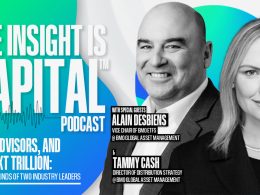by Brad Tank, CIO, Fixed Income, Neuberger Berman
The current sweet spot in high yield may be short-dated bonds rather than floating-rate loans.
Since his passing last month, I’ve spent some time re-reading many of the articles written by Tom Wolfe in the 1970s and 80s. Before turning his attention to fiction Wolfe spent the first half of his career as a reporter, and has been credited with reinventing journalism by writing with a style and social insight not seen before.
He was a keen observer, attentive to detail and slavish to factual correctness. A quick study, and with remarkably broad interests, he wrote insightfully on everything from 1960s counterculture, the art world and modern architecture to Nascar, the U.S. space program and, of course, Wall Street.
A consistent theme in all of his work was skepticism of things that were currently fashionable or popular. The attitude was summed up in a memorable quote from The Electric Kool-Aid Acid Test: “I’d rather be a lightning rod than a seismograph.”
Had he not chosen to spend his life as a writer, Wolfe would have made a great investor. He had all The Right Stuff.
Rotation
Leading the list of things popular in the world of fixed income over the past two years has been tradable bank debt. Since the start of 2015, three-month U.S. dollar Libor has risen from 35 basis points to 233. Tradable bank loans have coupons set at a spread above Libor. So a loan fund ought to have been a buffer against rising interest rates, right?
Wrong. Performance has been surprisingly muted. And today, even as short rates are set to rise still further, there are additional reasons to think that the sweet spot in high yield might be found elsewhere.
Before the financial crisis, bank loan mutual funds were a niche. Since then, their popularity has grown spectacularly. The first wave of interest came from high yield investors looking for a safety buffer: Loans are traditionally senior in a capital structure to bonds and secured against assets. The subsequent waves broke as interest rates lifted out of their post-crisis depths.
As Libor passed the 100-basis-point threshold at the beginning of 2017, flows really took off. It was an important moment because most loans only begin to reset their coupons once Libor is over this 1% “floor.” U.S. loan funds have enjoyed substantial inflows in all but one month of 2017 and 2018. High yield bond funds, by contrast, suffered substantial outflows during 2017 and in all but one month year-to-date. That rotation is all about investors looking for a buffer against rising rates.
Rising Libor Offset by Declining Coupon Spreads
To be clear, loans have outperformed similarly rated bonds over the past 18 months. The Libor-plus coupons have not been as generous as investors might have assumed, however, and we now believe that risks in the sector are building, too.
For the first nine months of 2017, three-month Libor climbed from 100 basis points to 130 but the weighted average loan coupon declined, from just under 500 basis points to 480. That was because loan investors get very little “call protection”: Borrowers are free to call their loans early and refinance them, and they were doing so with lower coupons as demand exploded. Libor can rise by 30 basis points, but if the coupon spread over Libor declines by 40 basis points, investors end up getting less.
In short, loans have been defensive relative to high yield bonds, but were not necessarily a way to cash in on rising rates.
There Is No Senior Without Junior
Today, we are concerned that they may not even be defensive.
Demand for loans has been so strong that high yield issuers have all but ceased using the bond market. This year, the loan market has grown at a record-breaking rate. At $1 trillion, it is now just $200 billion short of the bond market.
The effect of that has been to reduce or even eliminate bonds from capital structures. Loans are only senior if there are bonds junior to them. Otherwise, the credit quality of loans begins to look very much like that of bonds. Add less restrictive loan covenants—the constraints on borrowers that protect investors—and the two sectors begin to look almost indistinguishable. Back in 2010, the split between BB and B or CCC rated loans was around 50/50. Now, B and CCC rated credits make up almost 70% of the market.
Seasoned
We do not anticipate an imminent train crash in loans. We do think it might be time to look elsewhere in high yield for the most attractive current opportunities, however.
High yield bonds carry some interest rate risk, but with the two-year U.S. Treasury yield at 2.5% and the five-year at 2.8%, much of the coming cycle may be already priced in. When we look at seasoned high yield bonds that were issued shortly after the financial crisis and now have one to three years until maturity, we find investors can build portfolios with a yield to worst of around 4.5% – 5.0% .
We believe that this short-dated high yield bond profile is attractive, especially relative to the perceived—but probably illusory—comforts of floating rates and higher credit quality in the highly popular loan market.
Copyright © Neuberger Berman













